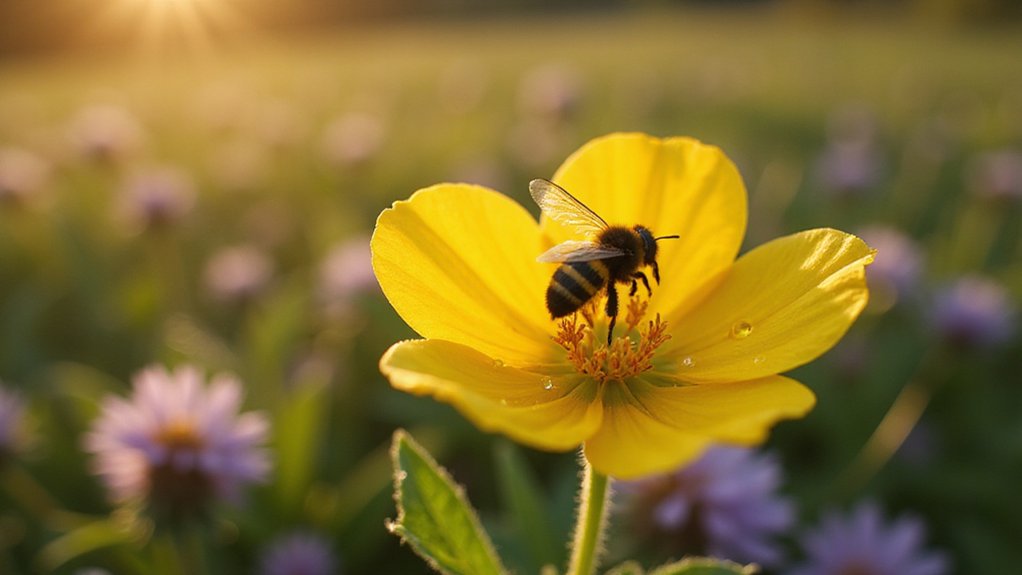A surprising discovery has changed what scientists know about flowers and bees. Evening primrose flowers can increase their nectar sugar content by 20% within just 3 minutes when they hear the sound of bee wings buzzing nearby. This rapid response shows that flowers aren’t passive in their relationship with pollinators.
The secret lies in special proteins called mechanoreceptors in flower petals. These proteins can detect vibrations from bee wings and trigger the flower to quickly sweeten its nectar. This makes the flower more attractive to bees, increasing the chance of successful pollination. The beach evening primrose (Oenothera drummondii) employs this selective nectar production to conserve resources while still attracting pollinators effectively. The bowl shape of some flowers may even help them better “hear” these buzzing sounds.
Nectar is mainly made of water and sugars, but also contains amino acids, minerals, and other compounds. Typical nectar consumed by honey bees contains about 30-35% sugar. Plants use special enzymes to convert sucrose into glucose and fructose in their nectar, affecting how it tastes to bees.
Bees are smart foragers. They can sense how sweet nectar is and remember which flowers offer better rewards. Honey bees can even switch between two feeding styles—lapping or suction—depending on how deep the nectar is in a flower. Bumble bees, however, only use a lapping technique. In natural environments, bees often encounter receding nectar meniscus in flowers, which influences their feeding efficiency and strategy selection.
This dynamic relationship between flowers and bees shows evidence of coevolution—plants and pollinators have developed together over millions of years. Flowers that can quickly enhance their nectar when bees approach may encourage longer visits, leading to better pollination.
The rapid nectar response also helps flowers conserve resources. By producing sweeter nectar only when pollinators are present, plants avoid wasting energy and reduce nectar theft by non-pollinators.
This sound-based system represents a sophisticated communication method between plants and their pollinators, revealing yet another fascinating aspect of nature’s complex interconnections.
References
- https://www.pnas.org/doi/10.1073/pnas.2305436120
- https://www.indefenseofplants.com/blog/2019/8/19/buzzing-bees-make-evening-primrose-flowers-sweeter
- https://pubmed.ncbi.nlm.nih.gov/37459520/
- https://royalsocietypublishing.org/doi/10.1098/rstb.2021.0163
- https://www.beelistener.co.uk/nectar-flow/nectar-drink-of-the-gods-bees/









